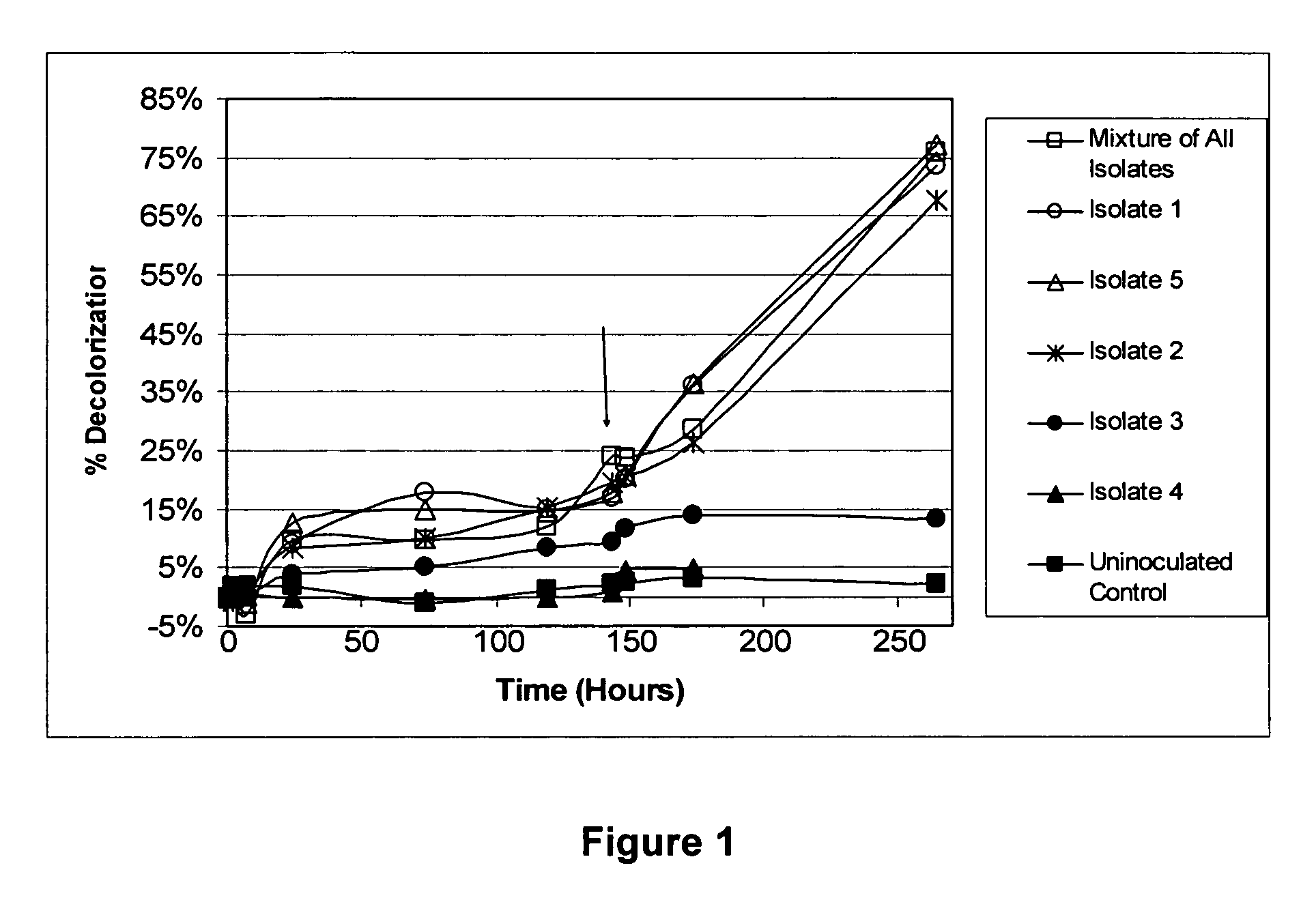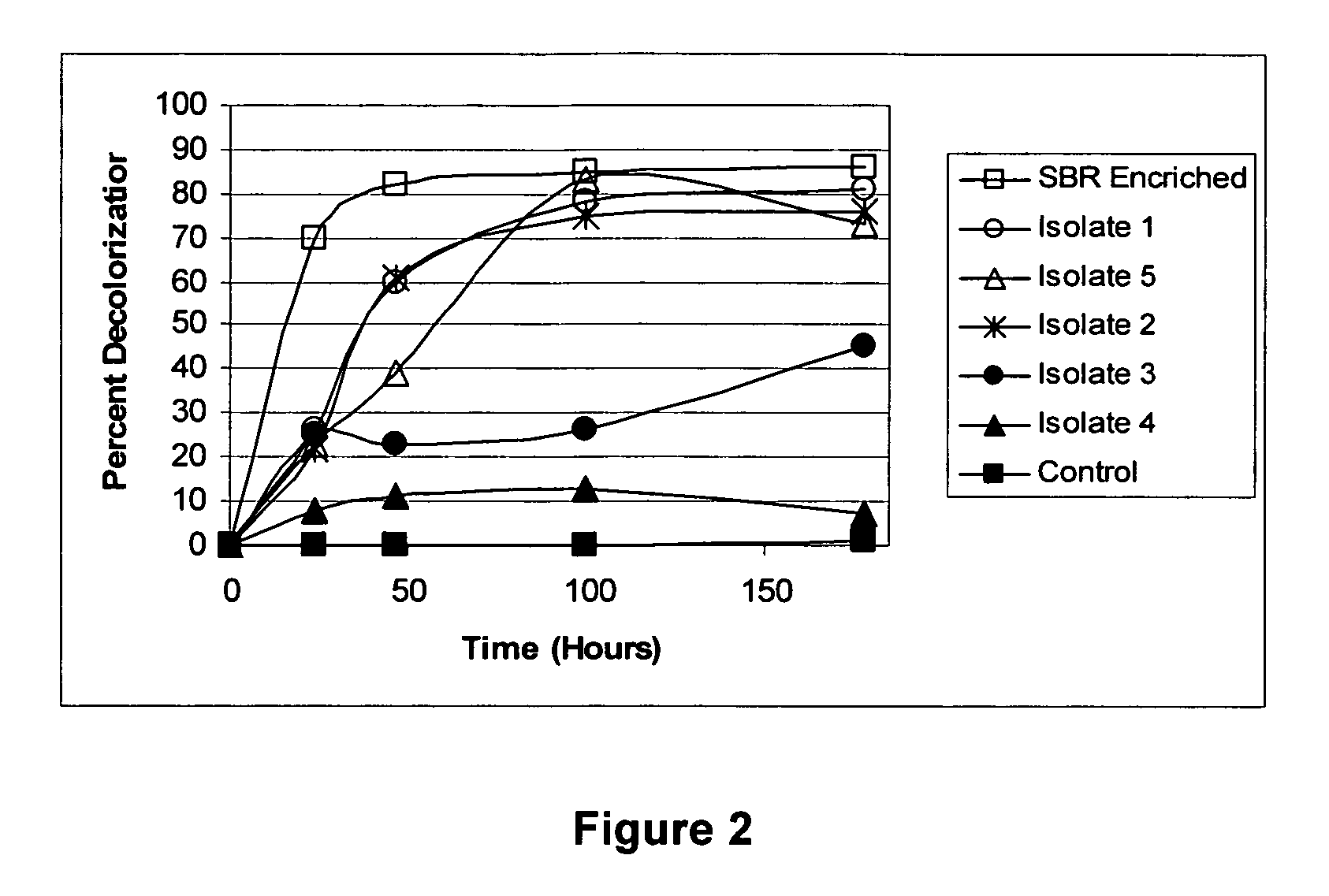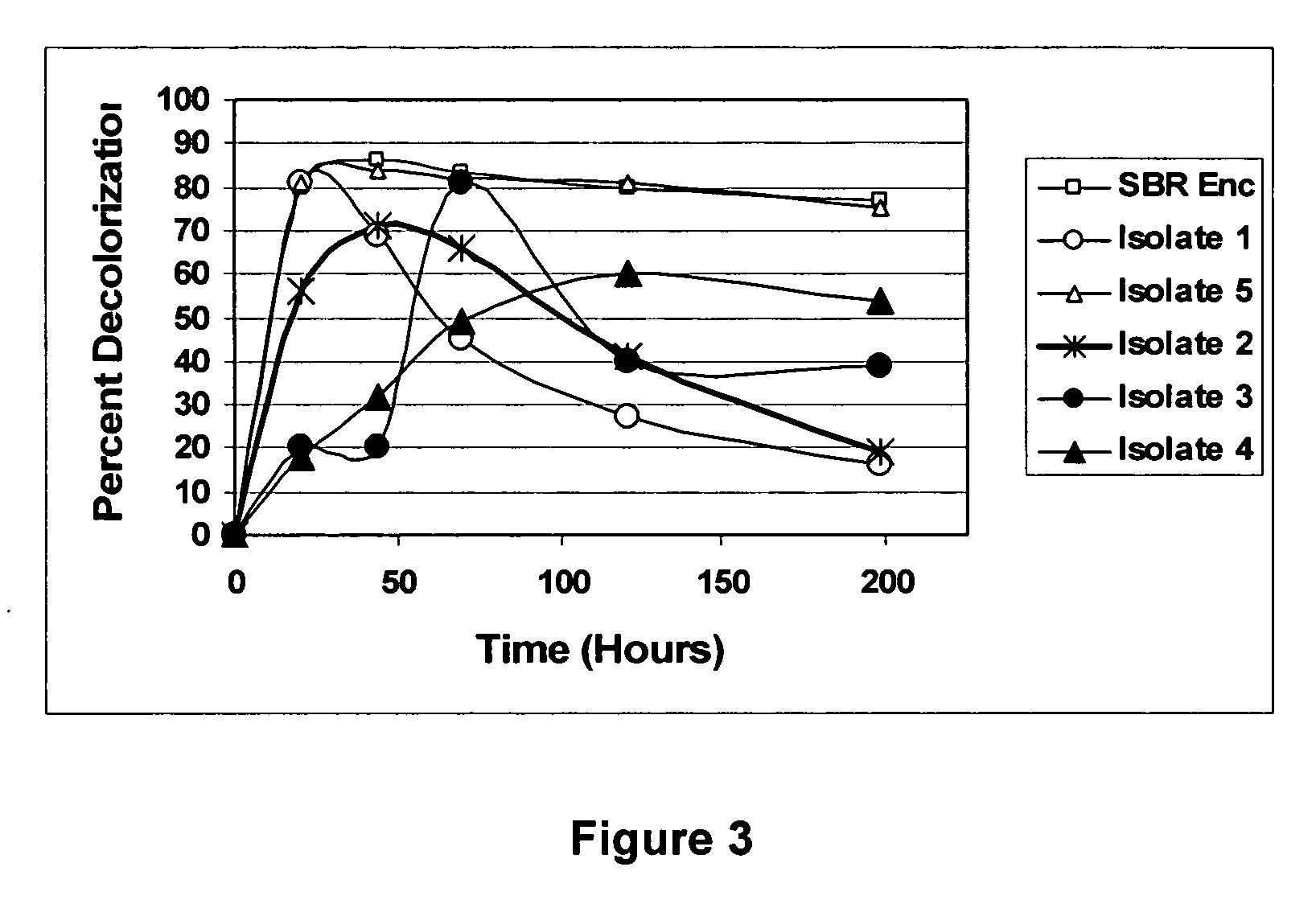Wastewater treatment compositions
a technology of wastewater and composition, applied in water treatment compounds, biological water/sewage treatment, chemistry apparatus and processes, etc., can solve the problems of aerobic bacteria typically present in such treatment systems not being able to utilize color bodies, not reducing the color of pulp and paper mill wastewater, etc., to reduce the chemical oxygen demand and remove or reduce the color of wastewater
- Summary
- Abstract
- Description
- Claims
- Application Information
AI Technical Summary
Benefits of technology
Problems solved by technology
Method used
Image
Examples
example 1
[0073] Samples were collected at Rayonier compost pits (Jesup, Ga.) and processed for bacteria capable of mediating the destruction of the color components of the waste stream.
[0074] Initial plating of the bacteria was performed on one of the following media to ensure a wide variety of phenotypes:
[0075] 1) tryptone (5.0 g / L), yeast extract (2.5 g / L), dextrose (1.0 g / L) and agar (15.0 g / L);
[0076] 2) SSC (1000 mL), powdered cellulose (10.0 g / L) and agar (15 g / L);
[0077] 3) SSC (1000 mL), xylose (10.0 g / L) and agar (15 g / L);
[0078] 4) SSC (1000 mL), xylan (10.0 g / L) and agar (15 g / L).
[0079] The composition of SSC (g / L) was: NH4Cl (0.8), MgSO4 (0.2), CaCl2H2O (0.01), NaPO4 (4.2), KH2PO4 (1.5), FeCl3 (0.005), FeSO4.7H4O (0.00028), ZnSO4.7H2O (0.0014), MnSO4.H2O (0.00084), CoCl2.6H2O (0.00024), CuSO4.5H2O (0.00025), and NaMoO4.2H2O (0.00024).
[0080] Colonies were randomly picked restreaked for isolation and screened for the ability to mediate the destruction of the color components fo...
example 2
Optimization of Degradation of Color Components
[0083] The degradation of color over time of the “strong pond” waste stream by pure and a defined mixed culture of the isolates. A media buffered with 100 mM 3-(N-morpholino) propane sulfonic acid (MOPS), pH 7.5, with 1% glucose and SSC was prepared (MPG). Isolated colonies of the individual bacteria scraped from plates and 100 mL of filter sterilized strong pond waste stream in 100 mL crimp sealed serum vials. The cells were added to the following final densities: Isolate 1 (Pantoea agglomerans)=5.6×106 CFU / mL, Isolate 5 (Enterobacter pyrinus var 1)=2.0×107 CFU / mL, Isolate 2 (Enterobacter pyrinus var 2)=4×107 CFU / mL, Isolate 3 (Aeromonas enteropelogenes)=2.16×108 CFU / mL and Isolate 4 (Pseudomonas plecoglossicida)=9.06×107 CFU / mL. A mixture of all organisms was added to a final concentration of 7.5×107. The cultures were incubated at 35° C. The strong pond waste stream was also treated with controls consisting of all of the components...
example 3
Consortia Development
[0090] Organisms were first divided into two major groups. The following tables provide the grouping of the organisms.
OrganismsConsortiumIsolate 1Isolate 2Isolate 3Isolate 5Isolate 4ENT+++++OrganismsUniden-ConsortiumIsolate 9Isolate 8Isolate 7Isolate 6tifiedBase+++++
[0091] A combination of a consortium from one group with a consortium from the other group was tested. After 2-3 days growth at 35° C. under anaerobic conditions with 1% cellulose as the sole carbon source, these were assayed for decolorization of the “strong pond” waste stream. The strong pond waste (“native” material) was not filter sterilized before the addition of the organisms. The filtered strong pond waste was filter sterilized before the addition of the consortiums. All organisms were added at an approximate final concentration ranging from 1×107 to 1×108 CFU / mL. The combination of the two major groupings “ENT” and “Base” gave much better results when combined than when alone, as shown in...
PUM
| Property | Measurement | Unit |
|---|---|---|
| concentration | aaaaa | aaaaa |
| concentration | aaaaa | aaaaa |
| concentration | aaaaa | aaaaa |
Abstract
Description
Claims
Application Information
 Login to View More
Login to View More - R&D
- Intellectual Property
- Life Sciences
- Materials
- Tech Scout
- Unparalleled Data Quality
- Higher Quality Content
- 60% Fewer Hallucinations
Browse by: Latest US Patents, China's latest patents, Technical Efficacy Thesaurus, Application Domain, Technology Topic, Popular Technical Reports.
© 2025 PatSnap. All rights reserved.Legal|Privacy policy|Modern Slavery Act Transparency Statement|Sitemap|About US| Contact US: help@patsnap.com



